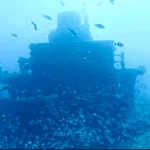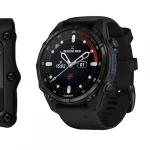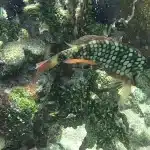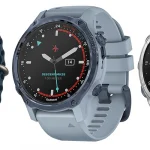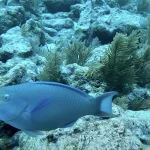How to Make the Most of Your June Diving Experience
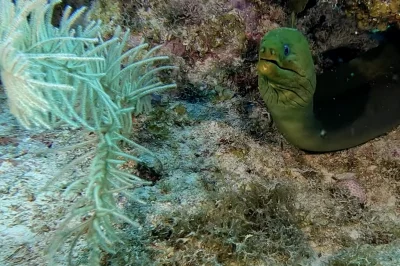
Table of Contents
- How to Make the Most of Your June Diving Experience
- Busting Myths About Summer Diving in the Florida Keys
- Avoid These Common Mistakes When Diving in Key West
- What Makes June Ideal for Scuba in Key West?
- Stay Safe: Understanding Key West’s Marine Life in June
- Predictions for Future Diving Seasons: Key West in June
- Maximizing Your Dive Gear Performance
- Compare the Best Dive Sites in Key West This June
Introduction
June in Key West offers scuba divers an exceptional diving experience with warm waters, optimal visibility, and fewer crowds than peak summer months. This blog post is designed to help diving enthusiasts make the most of their June visits to this underwater haven, providing a comprehensive guide structured around expert insights and practical tips. With a focus on safety, enjoyment, and the wealth of marine life, discover how to navigate the waters like a pro.
How to Make the Most of Your June Diving Experience
When planning summer diving in the Florida Keys, there are several misconceptions that divers may encounter, particularly concerning visibility, water temperature, and crowd levels. Understanding the reality behind these myths can significantly enhance your diving experience.
Visibility Myths and Reality
Myth: Summer offers consistently perfect visibility.
Reality: While summer can indeed provide excellent visibility — sometimes reaching up to 120 feet on calm days — tropical storms and hurricanes can severely impact conditions. During these weather events, visibility can drop dramatically, especially in shallower areas, sometimes falling to 30 feet or less. On average, visibility remains around 60 to 80 feet, which is still quite good, but it’s important for divers to check local weather forecasts and dive conditions before hitting the water.
Water Temperature Misconceptions
Myth: Summer diving requires thick wetsuits.
Reality: In summer months, water temperatures in the Florida Keys frequently soar to the mid-80s °F (around 29 °C). This warmth often allows scuba divers and snorkelers to enjoy shallow reef dives without additional thermal protection. In contrast, during the winter months, water temperatures can drop to the 70s, prompting divers to opt for wetsuits. Thus, it’s unnecessary to consistently wear thick wetsuits during the summer, making diving more comfortable.
Crowd Levels: Managed Experiences
Myth: Summer crowds overwhelm dive sites.
Reality: Although summer is a peak season for diving in the Florida Keys, dive operators typically manage crowd levels by limiting the number of dives to two per day for small groups. This approach helps ensure sites do not become overcrowded, allowing divers to experience the vibrant underwater ecosystem without feeling rushed. Even in high season, divers can enjoy excellent conditions while preserving the marine environment.
Busting Myths About Summer Diving in the Florida Keys
When scuba diving in Key West during June, divers often encounter several common mistakes that can compromise their safety and enjoyment. Understanding these pitfalls is crucial for both novice and experienced divers looking to make the most of their underwater adventures.
Environmental Considerations
One of the most frequently overlooked aspects of diving in June is the consideration of depth. Many divers, particularly those new to the area, may not be prepared for depths exceeding 100 feet. This can become hazardous if divers are not adequately trained or experienced. The warm waters of Key West can also mask temperature drops at deeper levels. Therefore, wearing a wetsuit is advisable even in summer, as temperatures can cool at depths, and prolonged exposure can lead to chills.
Pre-Dive Mistakes
- Inadequate Planning: Not checking daily weather and water conditions can lead to dangerous outcomes. Strong currents or poor visibility can significantly affect diving safety.
- Lack of Site Research: Understanding the specific conditions of your dive site, such as currents and potential hazards, is vital. Hasty decisions without proper research can lead to unfavorable situations.
- Equipment Errors: Forgetting to perform a buoyancy check or failing to set up gear properly can have severe implications underwater.
During the Dive
- Ignoring the Dive Plan: Sticking to a pre-established dive plan, including maximum depth and time limits, is essential. Disregarding this can lead to dangerous situations.
- Diving Alone: Always dive with a buddy who can provide assistance in emergencies. Solo diving is a known risk that should be avoided.
- Air Consumption Monitoring: Divers often forget to check their air supply regularly, putting themselves at risk when exploring abundant marine environments.
- Communication Gaps: Proper buddy communication is crucial. Agreeing on signals and emergency maneuvers before diving can prevent confusion.
Site Selection Errors
Beginners sometimes overestimate their abilities and attempt dives that exceed their experience level. In Key West, diving at sites like the Vandenberg wreck or deeper wreck dives can be challenging and should be reserved for experienced divers. Opting for well-known beginner sites such as Sambos Reefs or Sand Key ensures safer conditions and enjoyable experiences.
By recognising and avoiding these common mistakes, divers can enhance their overall experience while diving in Key West during June.
Avoid These Common Mistakes When Diving in Key West
June Scuba Diving Conditions in Key West: Advantages
June is an exceptional month for scuba diving in Key West, offering a blend of ideal conditions that make it stand out from other months. Here are the key advantages to consider:
Optimal Diving Conditions
- Warm Water Temperatures: Average water temperatures hover around 86°F (30°C). This warmth allows divers to wear lighter wetsuits, or even dive in just swimsuits, maximising comfort and enabling longer dive times.
- High Visibility: Visibility often exceeds 100+ feet, providing divers with exceptional views of underwater life and stunning coral formations. This clarity is perfect for photography enthusiasts wanting to capture vibrant marine scenes.
- Calm Seas: June usually brings relatively calm seas, which means reduced sedimentation and improved underwater clarity. These conditions create safe and enjoyable diving experiences for all skill levels.
Marine Life Abundance
- Vibrant Biodiversity: Dive sites around Key West are teeming with life, including tropical fish, sea turtles, and nurse sharks. The summer months herald peak marine activity, ensuring that divers encounter a rich variety of species on every dive.
- Favourable Dive Locations: Popular sites like Fingers Reef offer unique underwater topography, including swim-throughs and overhangs that cater to both novice and experienced divers, enhancing the overall exploration experience.
Considerations
As June marks the beginning of hurricane season, divers should stay informed about weather conditions. While this doesn’t significantly affect diving in the early month, monitoring forecasts will help ensure a safe and enjoyable trip.
What Makes June Ideal for Scuba in Key West?
Marine Life in Key West During June
Key West’s marine ecosystem thrives in June, offering encounters with diverse species. Notable sightings include:
- Mutton Snapper: Schools move along reefs during the full moon period.
- Pelagic predators: Barracuda, Kingfish, and Wahoo congregate around wrecks.
- Reef fish: Parrotfish, Damselfish, Yellowtail Snapper, Grouper, and Hogfish frequent coral areas.
- Sea Turtles: Loggerhead Sea Turtles can be seen, as nesting season begins in June.
Safety Tips for Divers in June
- Weather Preparedness: June is the cloudiest month in Key West, with overcast skies and occasional rain. Monitor weather forecasts for sudden shifts in conditions.
- Marine Life Interactions:
- Maintain a safe distance from Barracuda and Kingfish, which may assert dominance around wrecks.
- Avoid disturbing scavenged fish or fragile coral reefs to preserve habitats and maintain ecological balance.
- Gear and Conditions:
- Use sun protection (rash guards, sunscreen) due to warm air/water temps (~88°F).
- Confirm dive plans with local operators, as offshore visibility remains good despite calm seas.
- Group Safety: Dive with a buddy and stay within communication range. Overcast skies may affect underwater visibility despite otherwise favourable conditions.
- Respect Sea Turtle Nesting: Sea turtles begin nesting in June; avoid disturbing protected beaches or nesting sites.
Dive Computers
- Diving Computers for Female Divers
- Wreck Diving Computers
- Beginner Diving Computers
- Low-Light Diving Computers
- Technical Diving Computers
- Freediving Computers
- Underwater Photography Diving Computers
- Cold-Water Diving Computers
- Travel-Friendly Diving Computers
- Multi-sport Diving Computers
- Budget-Friendly Diving Computers
- Advanced Recreational Diving Computers
- Smartwatch-Compatible Diving Computers
- Child-Friendly Diving Computers
- Military or Professional Diving Computers
Stay Safe: Understanding Key West’s Marine Life in June
Diving Conditions in Key West (June 2025)
As June beckons with its warm embrace, diving conditions in Key West remain incredibly favourable for enthusiasts. The water temperature typically hovers in the 80s°F, making it suitable for long dives without the discomfort of thermal shock. This warmth not only enhances comfort but also encourages vibrant marine life interactions.
The visibility in June is generally very good, thanks to the calm seas and reduced wave action prevalent during this month. This clarity is a significant advantage for divers who seek to explore the colourful coral reefs and abundant marine life without obstruction.
Weather plays a crucial role in the diving experience. Daytime temperatures average around 88°F, with nighttime cooling to about 78°F. June is recognised as the cloudiest month in Key West, with occasional rain showers that help temper the heat, making in-water temperatures quite pleasant. Furthermore, winds typically stay below 10 mph, which minimises surface disturbances that could hinder visibility.
Marine Life Trends
June also heralds exciting trends in marine life behaviour. One of the standout species during this month is the Mutton Snapper, which forms large schools for spawning around the time of the full moon. Such gatherings present a spectacular sight for divers, offering chances to observe these fish in their natural habitat.
Additionally, pelagic species become increasingly active in June. Fish such as Barracuda, Kingfish, and Wahoo frequent wreck sites, drawn by nutrient-rich currents. Divers in search of thrilling encounters with these robust species will find plenty of opportunities during this period.
The overall marine environment stays stable as the summer season progresses, ensuring that divers have a rich and diverse underwater experience. The southeast winds, generally measuring 10-15 knots, coupled with seas of merely 1-2 feet, serve to enhance the favourable diving conditions throughout June.
Predictions for Future Diving Seasons: Key West in June
Thermal Protection
To ensure comfort during your dives in June, it’s essential to choose the right thermal protection. Water temperatures around 80-85°F make a 3mm full suit or a 7mm shorty (1/8-inch thickness) the ideal choice. These options help maintain a comfortable body temperature without causing overheating, which can occur with thicker wetsuits.
Additionally, while wearing booties can be optional in warm water, lightweight 2mm neoprene booties may be considered if you dive frequently or explore areas with cooler microclimates.
Visibility and Lighting
June typically boasts remarkable visibility of about 65-100 feet, but it’s still wise to prepare for varying conditions. Carrying a compact primary dive light is recommended, especially for explorations of cave systems, during overcast days, or when diving deeper wrecks. A backup light is also advisable for redundancy.
Moreover, don’t forget to apply anti-fog spray to your mask to counteract humidity and maintain clarity. Ensure the mask fits comfortably to prevent leaks, especially in cases of light currents.
Dive Accessories
The choice of fins can significantly impact your diving experience. In calm waters, full-foot fins may enhance efficiency, while open-heel fins paired with booties offer flexibility depending on personal preference.
When selecting a regulator, opt for a model designed for warm-water conditions to reduce the risk of free flow. Cold-water regulators are unnecessary for the warm temperatures you’ll encounter in Key West.
Additional Tips:
- Consider bringing reusable gloves if you plan to interact with local marine life, such as lobsters, to minimise the impact on their habitats.
- Always rinse your gear with freshwater after diving to extend its lifespan in saltwater environments.
Maximizing Your Dive Gear Performance
Top Dive Sites in Key West This June
Key West offers excellent diving opportunities in June with clear waters, vibrant biodiversity, and diverse sites catering to various skill levels. Here’s a breakdown of top sites optimised for visibility, marine life, and accessibility:
1. Middle Sambo Reef
- Visibility/Conditions: Clear waters averaging 30-100ft visibility, ideal for underwater photography. Depths reach 35ft (10.5m), suitable for beginners.
- Biodiversity: Hosts lobsters, tarpon, and diverse coral species (brain, elkhorn, boulder).
- Accessibility: Shallow profile and gentle currents make it perfect for new divers.
2. Western Sambo & Cannonball Cut
- Visibility/Conditions: Similar to Middle Sambo; currents may vary near the reef edges.
- Biodiversity: Spiny lobsters, colourful fish, and the Cannonball Cut area with a sunken tugboat wreck attracting schools of grunts.
- Accessibility: Max depth 30ft (10m), ideal for intermediate divers exploring wreck ecosystems.
3. Cayman Salvage Master
- Visibility/Conditions: Depth ranges 67-93ft (18-28m), suitable for advanced divers. Visibility depends on surface conditions.
- Biodiversity: Artificial reef with large fish species, including tarpon and occasional marine predators.
- Accessibility: Requires experience due to depth, but offers a unique wreck-diving experience.
4. Western Dry Rocks
- Visibility/Conditions: Pristine waters with schools of grunts and snappers. Coral formations enhance visibility.
- Biodiversity: Vibrant coral gardens support parrotfish and angelfish, complemented by healthy coral and sea turtles.
- Accessibility: Intermediate-friendly site near Key West, often paired with Sambo reefs in multi-dive trips.
5. Joe’s Tug
- Visibility/Conditions: Depths 45-65ft (14-20m); visibility can vary but often clear.
- Biodiversity: Home to “Elvis,” a resident jewfish, and occasional nurse sharks.
- Accessibility: Advanced divers (AOW recommended) can explore this smaller wreck south of Key West.
6. Sand Key
- Visibility/Conditions: 35-75ft (11-23m) depth; popular for both snorkelling and diving.
- Biodiversity: Transition zone between shallow reefs and deeper waters, attracting pelagic species.
- Accessibility: Intermediate site with moderate currents, accessible via daily charters.
7. Pickles Reef
- Visibility/Conditions: Famous for 75-100ft visibility, showcasing healthy coral and fish.
- Biodiversity: Angelfish, parrotfish, and nurse sharks thrive here.
- Accessibility: Moderate depth (50-80ft), best for divers with open water certification.
June-Specific Considerations
- Visibility: Ocean currents and summer weather typically yield excellent clarity.
- Biodiversity Hotspots: Western Dry Rocks and Pickles Reef are prime for spotting tropical fish and healthy coral.
- Accessibility Tips:
- Beginners: Prioritise Middle/Western Sambo and Sand Key.
- Advanced: Target Cayman Salvage or Joe’s Tug for wreck experiences.
When planning your dives, prioritise sites like Middle Sambo for ease and Western Dry Rocks for coral diversity, while deeper wrecks like Cayman Salvage cater to experienced divers.
Compare the Best Dive Sites in Key West This June
Preparation & Gear
Key West offers diving enthusiasts the chance to explore vibrant coral reefs and rich marine life. To ensure a safe and enjoyable experience, proper preparation and gear are vital:
- Invest in proper gear:
- Wetsuit: Even in warm waters, a wetsuit is essential for thermal protection and to prevent abrasions.
- Buoyancy Control Device (BCD): This allows divers to adjust buoyancy easily during ascents and descents.
- Dive computer: Essential for tracking depth, time, and ascent rates, contributing to overall diving safety.
- Prioritise certification: Enrol in a PADI® Discover Scuba Diving course to gain hands-on training and understand vital safety protocols.
Dive Execution
Executing dives correctly enhances safety and enjoyment. Here are some key techniques to master:
- Master entry techniques:
- Giant stride: This method involves leaping off the boat’s platform while securing your mask in place.
- Surface checks: Before descending, it’s crucial to test buoyancy using weights.
- Stay alert during the dive:
- Equalise ears: Regularly adjust to pressure changes to prevent discomfort.
- Observe guides: Watching experienced divers can help you learn valuable techniques.
- Manage gear independently: Practise setting up equipment, like your BCD and fins, onboard, but don’t hesitate to ask for assistance if needed.
Safety & Best Practices
Maintaining safety during dives is paramount. Here’s what to keep in mind:
- Follow protocols strictly:
- Attend pre-dive briefings to review hand signals, depth limits (commonly 10–30 feet), and safety procedures.
- Stay within your certification limits to minimise risks.
- Protect marine ecosystems: Avoid touching reefs or disturbing wildlife to help preserve Key West’s delicate coral ecosystems.
Site Selection
Choosing the right dive sites is critical for beginners. Here’s where to go:
- Target beginner-friendly locations:
- Key West Marine Park: Known for shallow depths (20–30 ft) and an abundance of marine life.
- USNS Gen. Hoyt S. Vandenberg wreck: An ideal site for skill practice, offering a historic experience in shallow waters.
- Schedule wisely: Typical dives last over 45 minutes—monitor your energy levels and descent rates.
Sources
- Cast About Travel – Summer Diving in the Florida Keys
- Scuba Diving – Tales of the Florida Keys
- Florida Keys – A Dive Wonderland
- Key West Scuba Diving – Scuba Diving Safety Tips
- A1 Scuba – Summer Scuba Diving Mistakes
- Lost Reef Adventures – Essential Diving Tips
- ScubaBoard – Best Time for Keys Diving
- Tech Dive Travels – Best Time to Dive in Florida Keys

